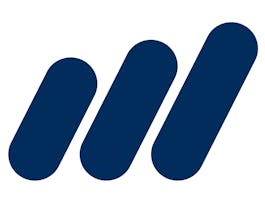Supply chain planning is an important activity in any supply chain. This is where organizations get an idea of the upcoming demand, realize if they have the capacity to meet the demand, and determine how to realize these demands. In this course, we will explore how to use data science to conduct demand and supply planning, how to constrain the forecast, and how to measure the results. As we walk through this process, we will also explore how to use Excel to quantify each step.



Supply Chain Planning
This course is part of Leverage Data Science for a More Agile Supply Chain Specialization

Instructor: Paul Jan
Sponsored by EdgePoint Software
11,066 already enrolled
(193 reviews)
Recommended experience
What you'll learn
Describe how demand planning, supply planning, and constrained forecast are associated with one another.
Use Excel to analyze historical data to quantify future needs.
Measure and quantify results for improvement.
Skills you'll gain
Details to know

Add to your LinkedIn profile
4 assignments
See how employees at top companies are mastering in-demand skills

Build your subject-matter expertise
- Learn new concepts from industry experts
- Gain a foundational understanding of a subject or tool
- Develop job-relevant skills with hands-on projects
- Earn a shareable career certificate


Earn a career certificate
Add this credential to your LinkedIn profile, resume, or CV
Share it on social media and in your performance review

There are 4 modules in this course
Welcome to Module 1, Demand Planning. In this module, we will explore demand planning, how to identify influencing factors, how to differentiate between the three simple statistical forecast types, and how to compute a few forecast values.
What's included
2 videos2 readings1 assignment1 discussion prompt
Welcome to Module 2, Supply Planning. In this module, we will discuss the basics of supply planning, how to confirm internal & external capacity, how to confirm material availability, and the importance of communication and data sharing to supply planning.
What's included
1 video3 readings1 assignment1 discussion prompt
Welcome to Module 3, Constrained Forecast. In this module, we will discuss constrained forecasts and consensus meetings. Specifically, we will cover the purpose and creation of constrained forecasts and how consensus meetings are utilized to reach organizational goals.
What's included
1 video2 readings1 assignment1 discussion prompt
Welcome to Module 4, Measure Results. In this module, we will discuss measuring results through collecting actual performance results and calculating forecast errors. Specifically, we will discuss the purpose of measuring results, the types of metrics used when measuring results, and common error measurements and their advantages and disadvantages.
What's included
1 video1 reading1 assignment1 discussion prompt
Instructor

Offered by
Why people choose Coursera for their career




Learner reviews
193 reviews
- 5 stars
67.87%
- 4 stars
21.24%
- 3 stars
5.18%
- 2 stars
2.07%
- 1 star
3.62%
Showing 3 of 193
Reviewed on Oct 13, 2023
Muy bueno. Fácil de entender, si se tiene algún conocimiento previo de estadística o experiencia laboral en Supply Chain.
Reviewed on Sep 11, 2023
The course was good but it should be more detailed. It should cover more aspects of Supply Planning but overall a good experience.
Reviewed on Aug 2, 2023
Great course to learn about statistics, really learned and enjoyed new concepts and about supply chain management
Recommended if you're interested in Business

Corporate Finance Institute

Fundação Instituto de Administração

Alfaisal University | KLD

Rutgers the State University of New Jersey

Open new doors with Coursera Plus
Unlimited access to 10,000+ world-class courses, hands-on projects, and job-ready certificate programs - all included in your subscription
Advance your career with an online degree
Earn a degree from world-class universities - 100% online
Join over 3,400 global companies that choose Coursera for Business
Upskill your employees to excel in the digital economy


